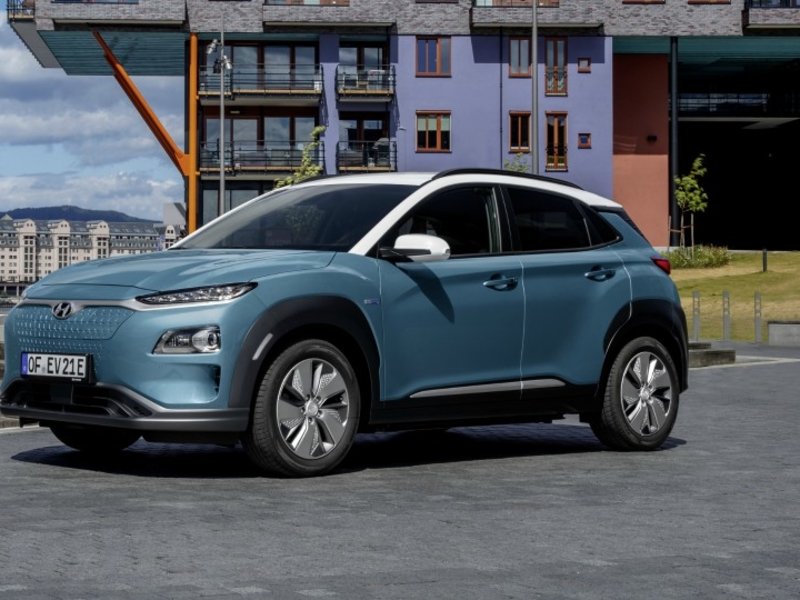
European Union regulators would like us to drive electric vehicles to reduce emissions, but is all of Europe ready for the transition?
After three weeks of living with a battery-powered car in northwest Italy, I still do not have a definitive answer to that question. Let me explain why.
- Product: I drove a Hyundai Kona Electric compact crossover in Excellence trim, which comes with a 64 kWh battery pack that is homologated for 449 km of range under the WLTP cycle. The real-world range of about 217 miles (350 km) allows for urban daily use and reasonable weekend trips. Even on battery-saving “eco” mode, the Kona’s 204 hp let me outrace many internal-combustion vehicles from a stoplight.
- Home charging: With a standard Italian outlet of 3 kWh, a full charge should take a little more than 21 hours. But in reality, the available power varied from 2.1 to 2.7 kWh. “Range anxiety” prevented me from running down the battery all the way, but my charging times included 23 hours to go from 26 percent to 100 percent, and 2.3 hours to go from 96 percent to 100 percent. Reasonable? Well, until my washing machine kicked in. When it heated the water, it increased electricity consumption, and combined with charging the car, overloaded my household circuit. I had to go outside to my garden, detach the charging cable, then switch the power back on. On a cold, rainy winter day, you might dream of having a diesel.
- Public charging: This was something of a nightmare. The closest public charging stations were about 3.1 miles (5 km) from my house. There were none on the three public highways that depart from Turin. But on the plus side, I found a 7.2 kWh charger at a shopping mall that pumped in about 14 kW of electricity — or 22 percent of a complete charge in about two hours — for just 2 euros. However, I took on about 38 kW at an Enel X (one of Italy’s largest charging systems) in around two hours, at a cost of 16.43 euros. On top of this, several charging stations were blocked by non-electric vehicles. Maybe in a few years it will be as easy to find a public station in Italy as it is in Norway, but right now it’s a part-time job.
- Real-world range: Not a simple answer. In city driving, at 5.6 miles (9 km) per kilowatt used, you could potentially achieve a stunning 357.9 miles (576 km) by recovering a significant amount of energy through diligent “one pedal” driving, slowing down through regenerative braking. On the highway, at 3.1 miles (5 km) per kilowatt, range should be around 198.8 miles (320 km). And the expected range is calculated by use patterns. Thus, with a full charge, I was usually shown a range of 248.6 miles (400 km), which peaked at 255.38 miles (411 km) the day I returned the car. But even this was about 10 percent less than the 449 homologated range.
- Range anxiety: As I got to know the Kona and its actual energy consumption, the fear of getting stuck with a dead battery decreased — but it never went away, particularly with a fragmented charging infrastructure. I could not convince my wife that having to drive on the highway at 62 mph (100 kph) with the cruise control on and radio and heat off to save energy is the way of the future. I’m told that air conditioning is even more energy hungry.
- Cost of ownership: Automakers say that the total cost of ownership of an electric vehicle is the same or less than that of an internal-combustion version. It’s hard to come to that conclusion when electricity prices show huge differences. At home, I paid 22 cents per kilowatt, while Enel X stations cost 45 to 50 cents per kilowatt, and Ionity fast charging on highways is 79 cents per kilowatt. In real terms, a full charge at home could cost just 14 euros but would take nearly a full day, while on the highway it might take just a few hours but cost more than 50 euros.
- Price: The top-spec Kona Electric Excellence has one of the largest batteries in the compact segment, permitting true all-round use. But at 50,350 euros in Italy, it remains a tough sell, even after deducting an EV bonus of 4,000 euros, which can increase to 6,000 euros when scrapping a high-polluting vehicle.